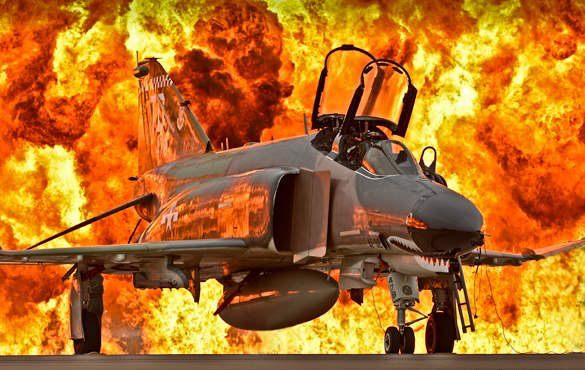F-4E Phantom II

A former USAF pilot, Doug Bower flew the MacDonald Douglas F-4 Phantom II from 1977 through to 1981. Now retired after flying 20 years in military training and fighter aircraft in the USAF followed by 20 years of international civilian cargo flight for FedEx Express. His retired days are split between homes in Colorado and Alaska and still loves flying. We were fortunate to catch up with Doug to get his thoughts on this magnificent plane.
I’m afraid I’m not real good at the nuts and bolts of internal combustion engines. I’ve been told by auto mechanics in 2 US states that if I promised not to work on cars, they would promise not to fly airplanes…that hurt! I will tell you I loved this engine back when I was an air-to-air fighter pilot in the late 70s/early 80s. It could survive hacks like me who would routinely go from idle to full afterburner in one rapid motion. With that said, when it did protest by compressor stalling (happened twice to me) it is quite a display…fire shoots out both ends and the rpm comes down very rapidly. This in itself is a traumatic experience, but now have it happen while you are in the middle of a dogfight and it really gets your attention. Fortunately, I never had it happen in actual combat (being a Cold Warrior I never flew in combat), but it was definitely dramatic when it happened. On the other hand, it started back up without hesitation and operated normally until we returned home and had it inspected. Balancing this minor fault is the performance and durability of this giant.
Two of our squadron mates (the Phantom has a crew of 2 – Pilot & Weapons Systems Operator) were out on a solo training mission and managed to hit the top of a poplar tree. While the tree did severe damage to the aircraft (nose, wing, and tail) it destroyed one engine and knocked the other out of its mountings. They climbed away from the ground and then proceeded to fly the 100 miles back to base on that one crippled engine. A fantastic job by that venerable old engine…love that thing!
Some basics about the engine, it has a 3 stage turbine and a 17 stage compressor that produces 17,900 lbs of thrust in full afterburner. Since the Phantom had two of these beauties, it was rated as a Mach 2.5 aircraft. Now, I was an FCF (Functional Check Flight) Pilot and part of our profile was to take the aircraft up to 40,000 ft , put the throttles full forward and leave them there until the airspeed stopped increasing.
Some final thoughts about this wonderful war bird, it was designed and produced in the mid 1950s as a multipurpose fighter/attack aircraft. It ruled the skies for decades afterwards and could do just about anything on the battlefield (air interceptor, air-to-air combat, strategic bombing & Close Air Support). When the fleet started aging and the USAF began replacing it in the 1970s, it took 3 different next generation aircraft (F-15, F-16 & A-10) to do the missions the F-4 had previously done alone. It is a matter of record that the new aircraft did their missions better than the older Phantom, but they only had a single mission to concentrate on. Those of us who were privileged to fly and work on it had our not so complimentary names for the F-4, Double Ugly, Rhino and Flying Barn Door to name a few, but we all adored that jet. It only takes one look at this aircraft to know its purpose – war. It will be forever known as the iconic war bird of the Vietnam era.